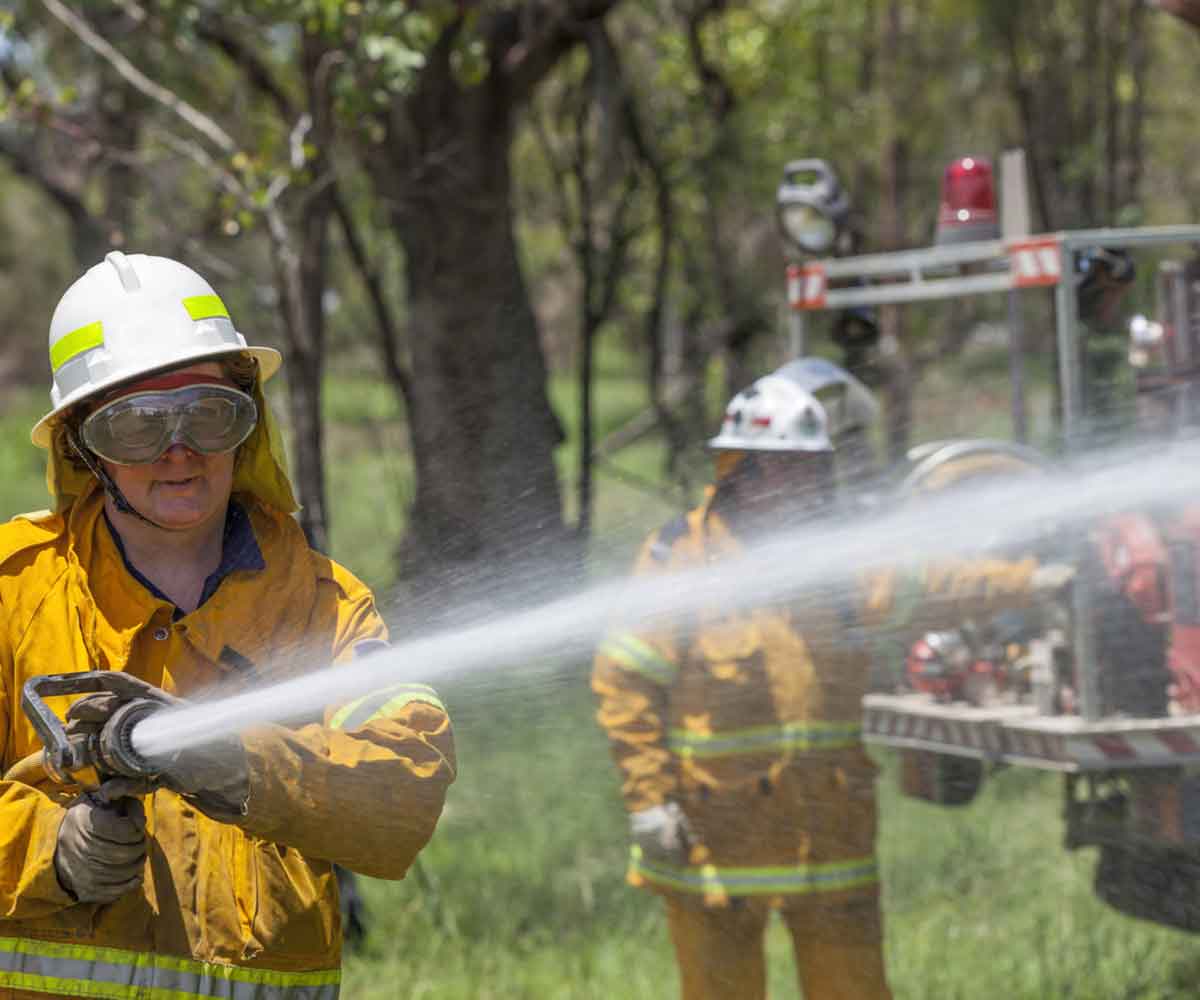Lorem ipsum dolor sit amet, consectetur adipisicing elit, sed do eiusmod tempor incididunt ut labore et dolore magna aliqua. quis nostrud exercitation ullamco laboris nisi ut aliquip ex ea commodo consequat.
How to Transition to Fluorine-Free Foam
Firefighting foams are highly effective fire suppression tools, especially to extinguish the most challenging and high-risk fires. Of these foams, aqueous film-forming foam (AFFF) has long been regarded as the most effective, and therefore the top choice for many facilities.
Unfortunately, years of research have proven that AFFF contains per and poly-fluoroalkyl substances (PFAS), which can pose serious environmental risks and health hazards to humans.
Scientists, environmentalists, and governing bodies have started to take action on PFAS-related issues. Along with them, many facilities have started to do their due diligence and seek out safer, PFAS-free firefighting foam alternatives like fluorine-free foam.
But the transition to fluorine-free foam is easier said than done. There’s a lot that goes into the process of replacing an entire fire suppression system with another. Here’s an overview of the steps to guide you through.
Do I Need to Transition to Fluorine-Free Foam from AFFF?
Fluorine-free foam is a synthetic-based foam that contains surfactant blends and polysaccharides, creating a blanket of bubbles above fire fuels to cool and extinguish them. It’s a safe, PFAS-free alternative to AFFF and works just as effectively. Still, some facilities are hesitant to transition to it — either because they’re not informed of its effectiveness or they’re not equipped to take on the extra work that comes with the transition process.
All of this begs the question, do you really need to transition to fluorine-free foam from AFFF?
It’s a tricky question to answer because each situation is different. Here’s what we can tell you:
Some facilities are required to transition to fluorine-free foam (or another PFAS-free foam alternative) because the state they’re located in has highly regulated the substance or banned it completely. For facilities in other states, it’s a matter of choice — at least for right now.
The Environmental Protection Agency has been clear about its PFAS action plan, which involves passing the PFAS Action Act of 2021. This act was passed by the House in July of 2021 and is pending in the Senate before the Committee on the Environment and Public Works. While it doesn’t currently ban the use of AFFF, it does regulate it highly and set a nationwide precedent that AFFF is not a safe solution.
Thus, transitioning to fluorine-free foam isn’t a requirement everywhere yet, but it is a smart decision — for the environment, for human health, and for the future of your business.
How to Transition to Fluorine-Free Foam
So how can your facility make that transition to fluorine-free foam? Here are five general steps you’ll need to follow.
1. Contain & Dispose of AFFF Properly
Before you can install your new fluorine-free foam solution, you need to dispose of your existing AFFF. This disposal process must be done safely, in accordance with regulations and guidelines from governing authorities.
The most important factor to remember here is that AFFF should never be released directly into the environment. For most facilities with contained AFFF onsite, the disposal should be as simple as contacting an accredited disposal facility that can provide direction regarding transportation to their facility. There, it will be disposed of safely, usually through high-temperature incineration.
If there is some need for discharge of AFFF before it can be disposed of, it must be contained in a way that prevents harmful exposure to the environment, as the PFAS within it won’t degrade or break down. Some best practices for AFFF containment include:
- Developing a firewater runoff collection plan prior to discharge
- Installing primary and secondary containment systems at the discharge site
- Blocking nearby sewer drains
- Building temporary dikes or booms
Once AFFF is contained, it should be transferred to an accredited disposal facility to be disposed of.
2. Clean Out Existing Foam Systems
After you dispose of the AFFF, your next step is to clean the equipment that contained it. If you plan on using the same fire suppression equipment for your fluorine-free foam, it’s important to do a thorough cleaning, as harmful AFFF residue could still be present. This includes any tanks, trucks, pipes, valves, and other fire suppression equipment.
As part of this step, make sure to dispose of any cleaning products or water that was used to clean the foam systems exposed to AFFF. That water could also include substances that could harm the environment and people who live within it.
3. Replace Equipment, If Necessary
Instead of cleaning what already exists, you may choose to install all-new equipment. Or, perhaps your new fluorine-free foam system will require a few new components that need to be implemented. Either way, this is the time to make any equipment alterations your facility necessitates.
If your facility needs to make significant changes in equipment, it may be beneficial to work with an industrial fire protection team that:
- Understands the ins and outs of your industry, and
- Is comfortable with fluorine-free foam solutions.
They’ll help you ensure your new fire suppression system is effective and safe for use.
4. Update Testing & Emergency Response Procedures
Fluorine-free foam is just as effective as AFFF, but the two agents are different. Fluorine-free foam has different application methods, discharge rates, and more. Therefore, it’s important to update your testing and emergency response plans accordingly.
To learn more about the changes you may need to make, consult a fluorine-free foam expert. They’ll take a look at your facility’s current procedures and identify what needs to be modified.
5. Inform & Train
Last, but definitely not least, you need to inform and train your employees on your new fluorine-free foam fire suppression system. The new solution won’t work unless the people using it know how to use it. Provide them with documentation and possibly host a workshop or training meeting to ensure all important information is covered.
Of course, your employees won’t be the only ones involved in emergency fire response. Therefore, it’s necessary to also inform your local fire department of this change. That way, they can make sure their firefighters have the training they need to use the new extinguishant effectively.
Make the Switch to Fluorine-Free Foam Easy with Help From Vanguard
Transitioning to a fluorine-free foam solution isn’t a process you should have to take on alone. At Vanguard Fire & Security Systems, we’re here to lend a hand. For years, our Industrial Team has been researching, educating, and working with various manufacturers and regulatory agencies to prepare for changes and take proactive steps toward best practice solutions.
We’ve worked with various industrial facilities across the nation to deliver safer, more effective fire protection solutions, and we’
d be glad to help with yours! For more information, give contact us online.
What is the Security and what is Value of Integrity
Lorem ipsum dolor sit amet, consectetur adipisicing elit, sed do eiusmod tempor incididunt ut labore et dolore magna aliqua. quis nostrud exercitation ullamco laboris nisi ut aliquip ex ea commodo consequat.
Get best Private Security expert for your Security
Lorem ipsum dolor sit amet, consectetur adipisicing elit, sed do eiusmod tempor incididunt ut labore et dolore magna aliqua. quis nostrud exercitation ullamco laboris nisi ut aliquip ex ea commodo consequat.




